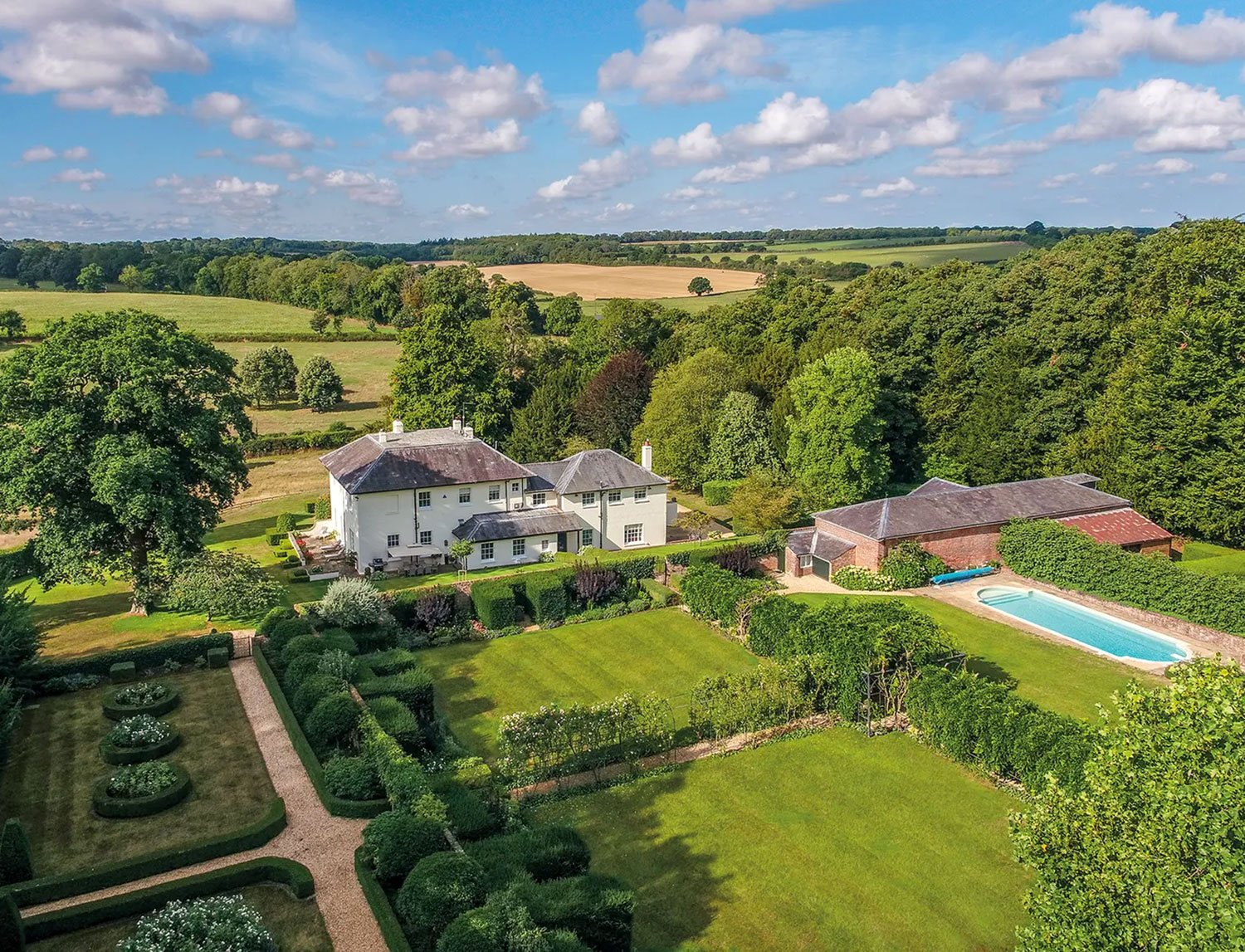
For devotees of Jane Austen’s period dramas, with all their mannered elegance, a rare opportunity has curtsied into the picture. Steventon House in Hampshire—the site where the author wrote some of her most beloved novels, including Pride and Prejudice—has just listed for £8.5 million ($10.2 million).
A historic gem, the Georgian manor was erected in the early 19th century by Austen’s elder brother, Edward, to replace the house where she was born and raised. The author resided in the original house from 1775 to 1801, when her father, a village rector for more than four decades, retired and relocated the family to Bath.
“Steventon House was the birthplace of the iconic author Jane Austen,” said Ed Sugden, director of Savills, the estate’s listing agency, along with Knight Frank. “Although the original structure has since disappeared, the Georgian masterpiece that currently stands, envisioned by her older brother Edward, perfectly befits the milieu that Austen captured in her writing.”
Steventon House, former home of Jane Austen. Courtesy of Savills.
Austen spent the majority of her life in the original Steventon House, where she composed some of her most canonical works, including Sense and Sensibility (1811), Pride and Prejudice (1813), and Northanger Abbey (1817).
Evoking the stately settings of her books, the white stucco structure topped with a slate roof nestles into rolling green hills enveloped by verdant forests. Several gardens dot the 52 acres of the property, which is accessed via a tree-lined drive and boasts a tennis court, heated swimming pool, a greenhouse, and a brick-built coach house, as well as a charming two-bedroom structure, Clover Cottage.
Inside, the 7,000 square feet of Steventon House have been tastefully renovated over the years. The home offers six bedrooms, four bathrooms, and four reception rooms, replete with ornate period features such as carved fireplaces and high ceilings adorned with elaborate cornices and moldings. It has also been furnished with sophisticated contemporary amenities, including bespoke kitchen units and a temperature-controlled wine cellar.
Steventon House, former home of Jane Austen. Courtesy of Savills.
The Austen family lived in the original abode courtesy of a relative, Thomas Knight of Chawton, who helped place Austen’s father, a reverend, as rector of St. Nicholas. Austen’s brother, Edward Austen Knight, razed the 16th-century structure in 1826 to erect the new Steventon House. He lived there until he sold the property to the second Duke of Wellington in 1855.
It’s “an exceptional opportunity,” remarked Sugden to Tatler, “to reside in one of Hampshire’s—and indeed, the U.K.’s—most noteworthy country homes.”